















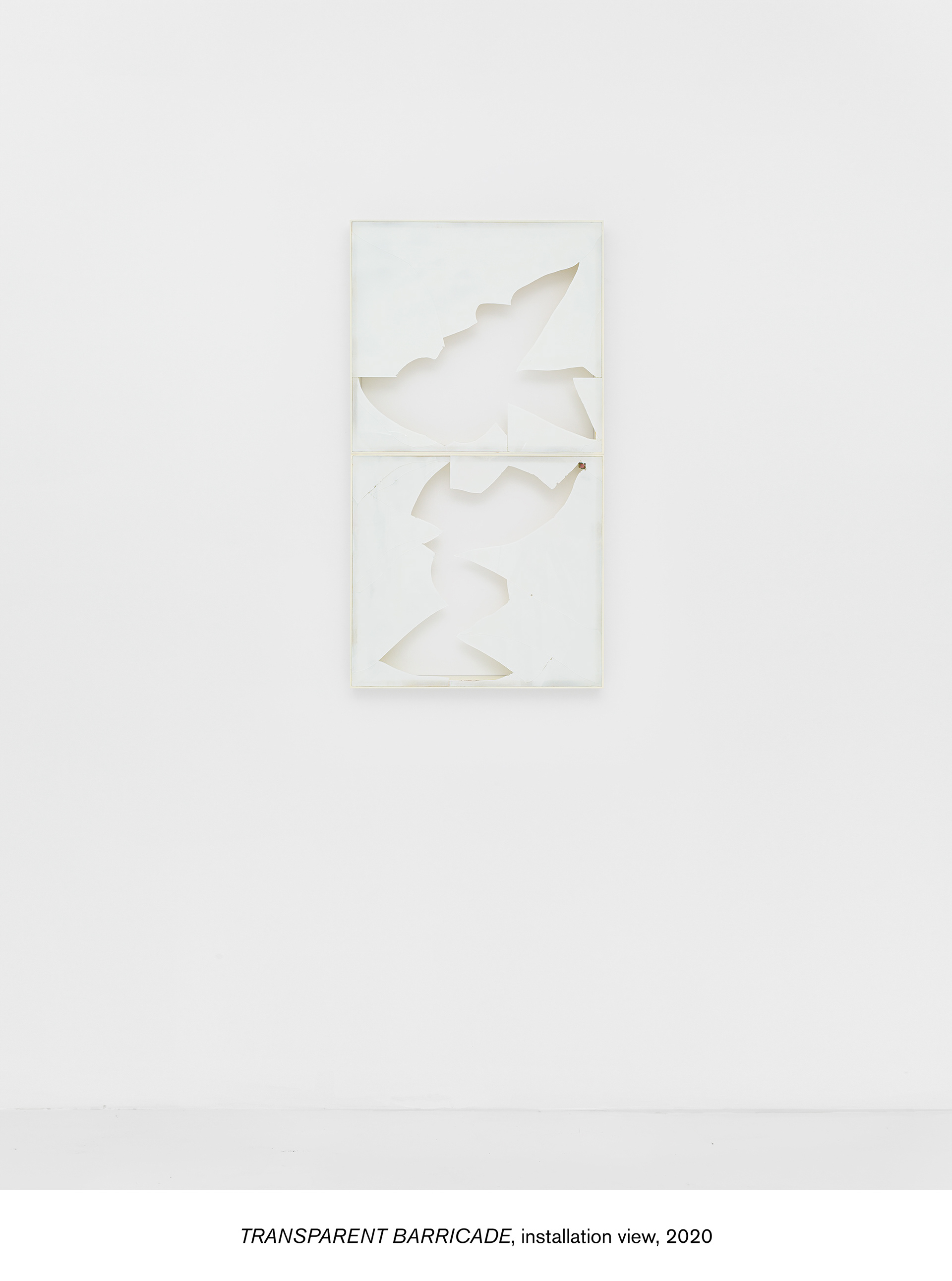







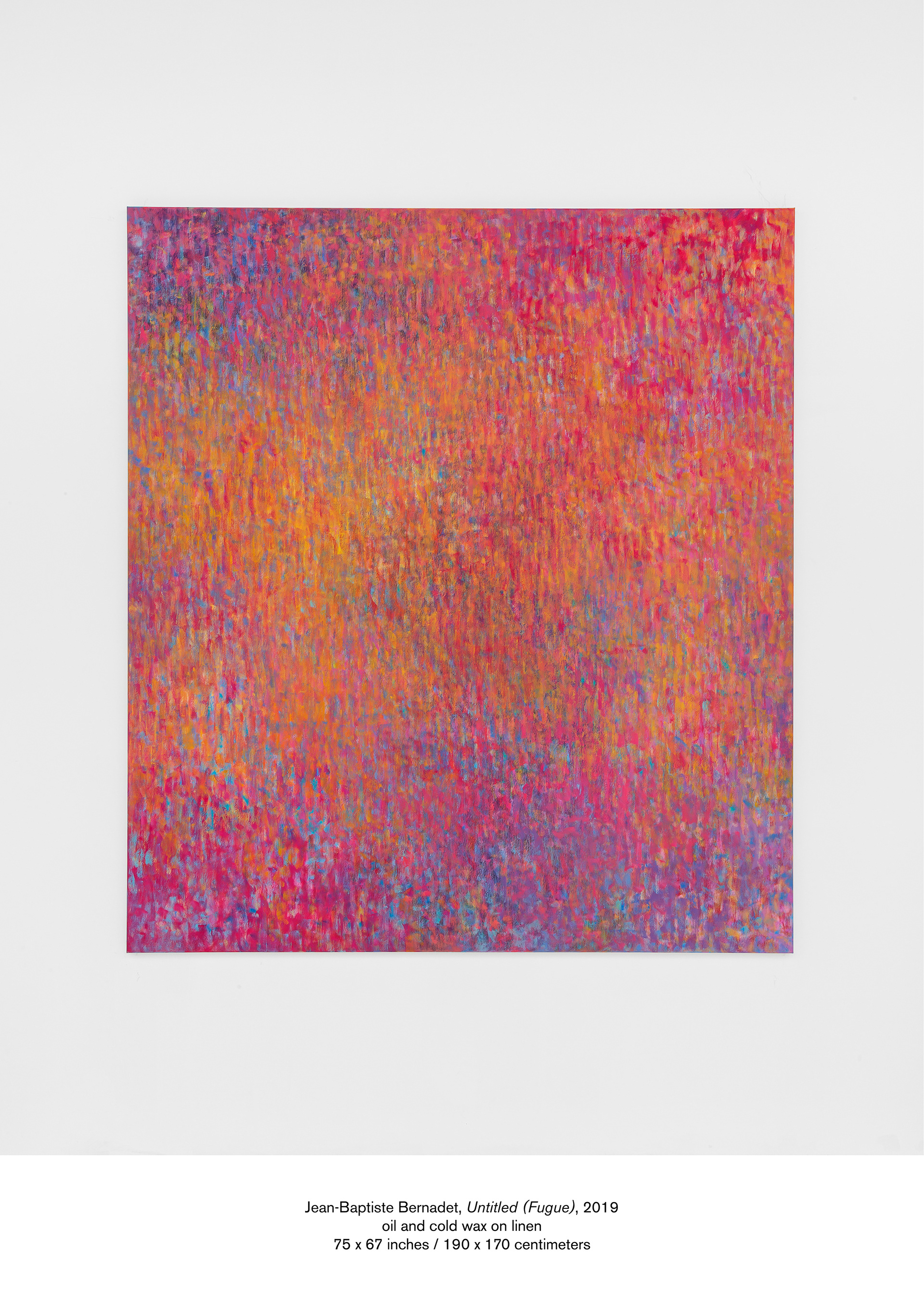
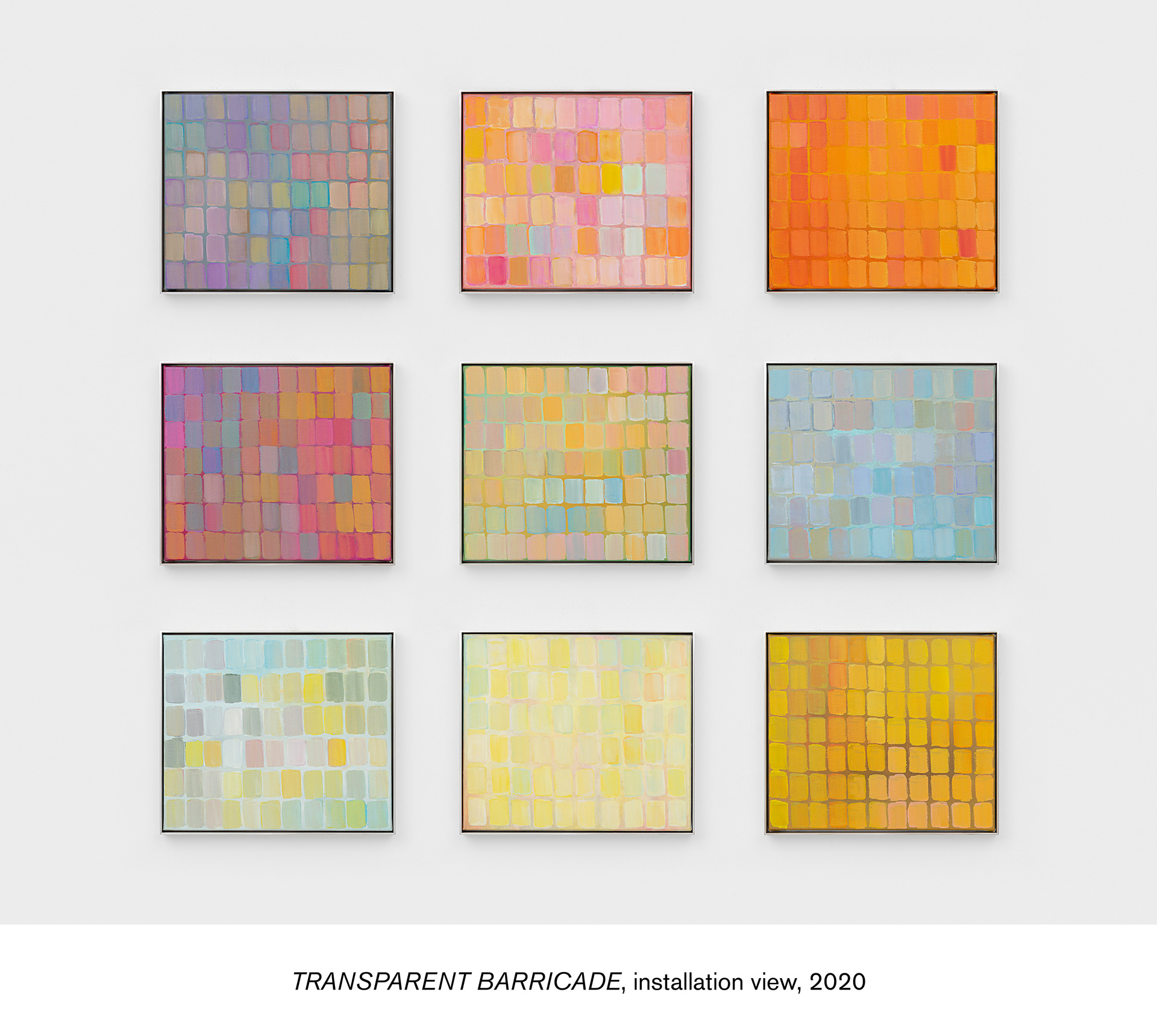



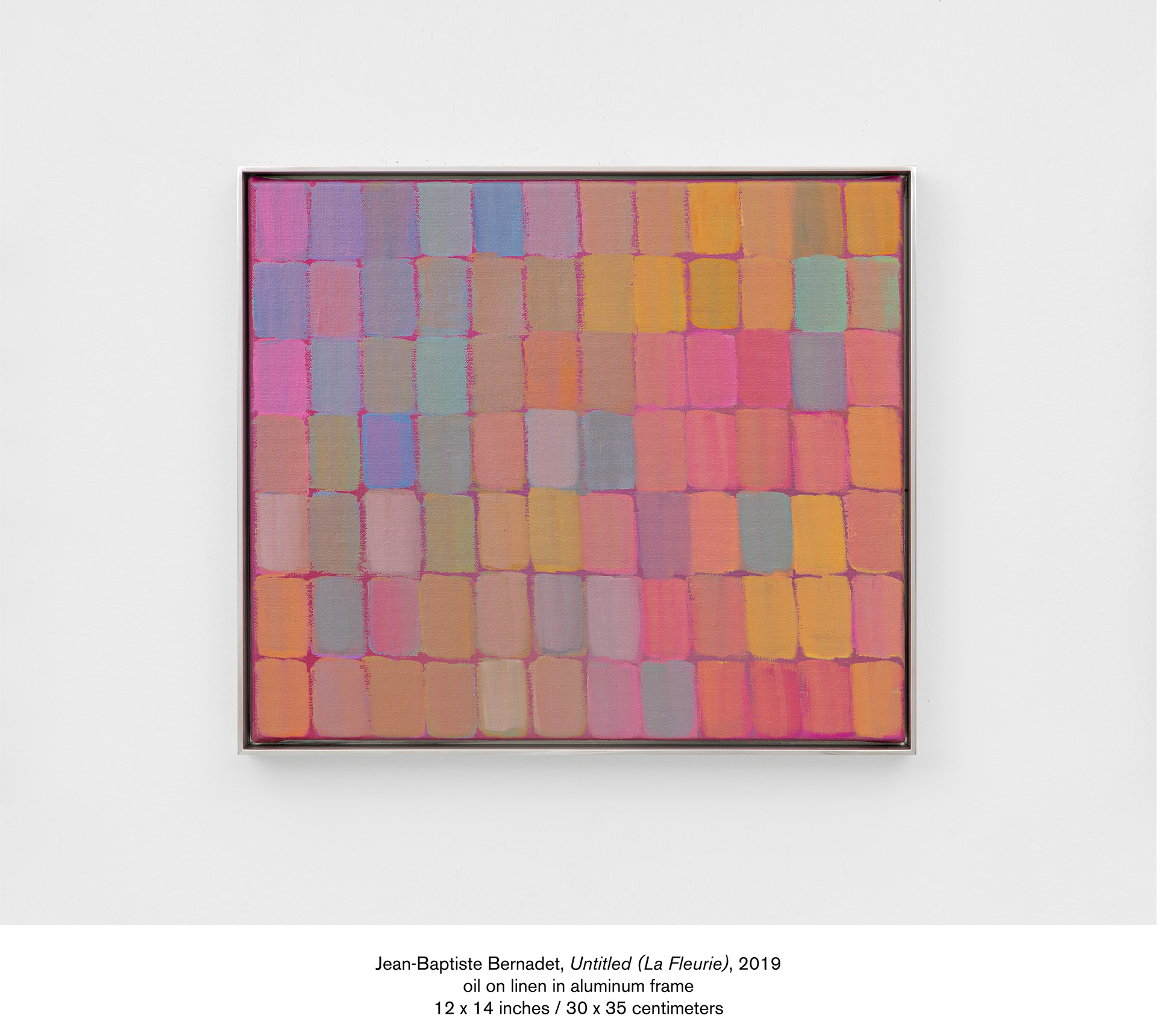

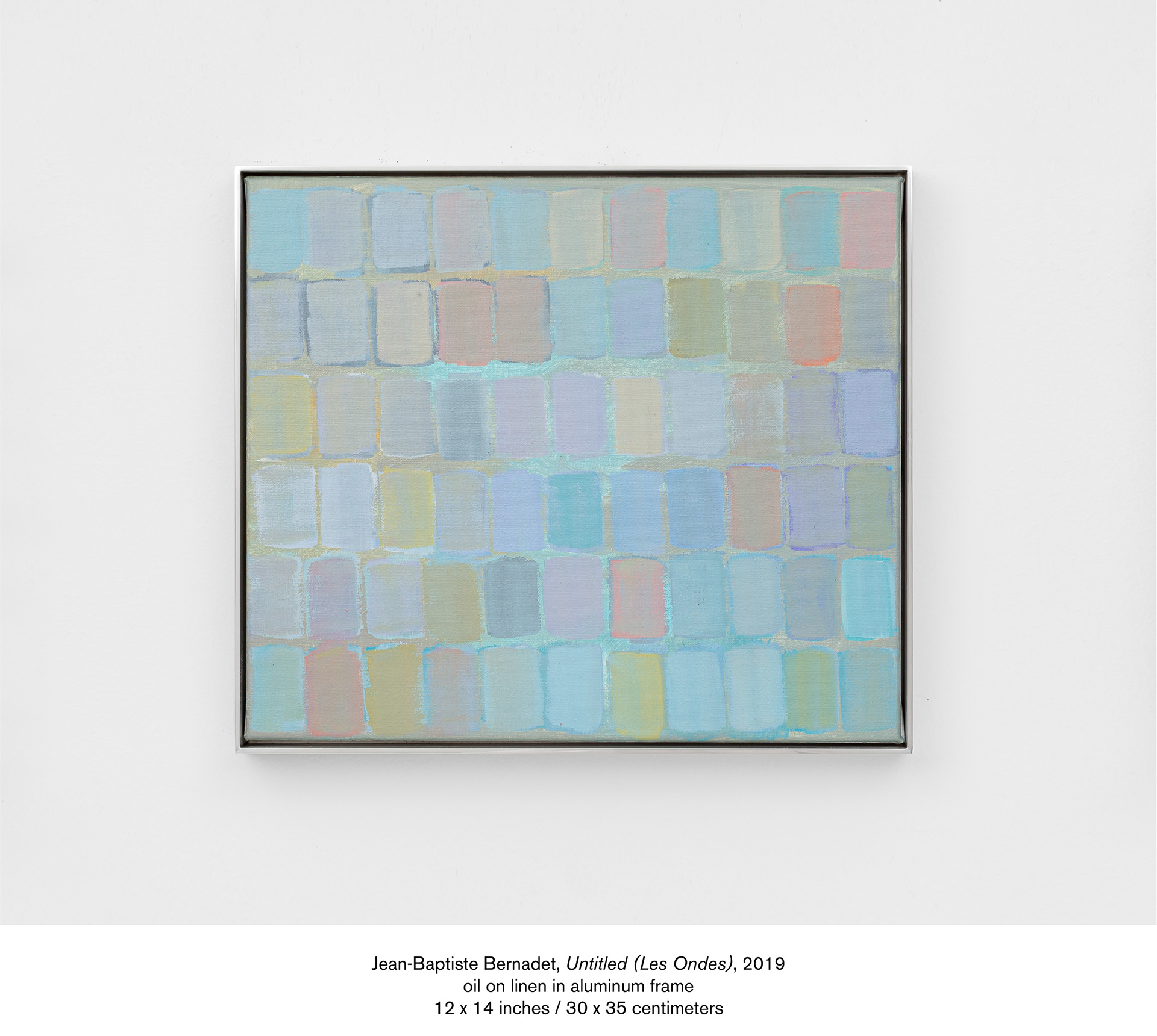



ASHES/ASHES is pleased to present Transparent Barricade, a two-person exhibition of Jean-Baptiste Bernadet and Antoine Donzeaud. The exhibition will be on view July 10 – August 30, 2020.
The exhibition features four recent works from Bernadet’s signature series of Fugue paintings. These are displayed one at a time and changed out every two weeks, progressing in luminosity from pale through bright to deeply saturated tones that evoke the passage from dawn to sunset. They are paired with nine new works by Bernadet comprised of colored grids, which also elicit a play of light and color. Alongside them are works by Donzeaud that highlight the architecture of the gallery as well as the bodies that occupy it. These include a diptych of broken glass panels, sheets of painted vinyl that encase the gallery’s lighting system and translucent rain coats hung along the walls.
Alfred Hitchcock’s Rope (1948) unfolds in real time in a series of long shots that are edited together to appear as a single shot. The film revolves around a cocktail party, the centerpiece of which, unbeknownst to the guests, is a gruesome crime concocted as an intellectual game by their hosts. One of the main ways that we comprehend the passing of time in the singular location of the apartment in which the party takes place is through the progressive darkening of the urban environment that we witness through the apartment’s windows. Such a scene has added resonance today, where time spent sheltering in place has been characterized by a fixed interior view that compounds long stretches of time into cycles of the rising and setting sun viewed through windows that both enclose us and offer us our only viewpoint outwards.
Bernadet’s Fugue paintings evoke such a vantage, fixed yet cyclically changing. All reference is stripped away, leaving a shifting atmosphere their primary subject matter. This abstract reference to landscape is realized through a pastel-rich palette that also invokes the virtual window onto the world, that of the digital screen which, while under quarantine, became our primary means of looking beyond our immediate environment. The gridded paintings that accompany these, in their even more resolute abstraction, seem to point beyond to a promise of landscape, a play of color and light that evades full recognition as a particular place or time. While the regularity of their gridded marks, one following the other in a theoretically endless succession, can also be read as marking time. This fixed grouping thus grounds the changing nature of time evoked by the shifting suite of Fugue paintings.
Donzeaud also riffs off of the window in a series of works made by painting panes of glass that he then breaks, leaving a jagged outline. These works evoke a darker element of the window motif by suggesting criminology’s broken window theory, which proposes that evidence of criminality, such as broken windows, is likely to generate further criminality. This was also a reference for Gordon Matta-Clark in his controversial Window Blow-Out (1976), where he shot out the windows of the Institute for Architecture and Urban Studies' Midtown Manhattan exhibition space, evoking the problematic application of this theory to smashed windows in depressed minority neighborhoods in The Bronx. Donzeaud extends the architectural reference to other works in the exhibition, framing the gallery’s lighting system with vinyl panels that incorporate the overspray from the process of making the Broken Windows works, as well as other studio debris. A series of translucent rain jackets extend this investigation to the site of the body, also suggesting a bodily referent for the off-white of the Broken Windows works.
Bernadet and Donzeaud can be understood to juxtapose the simultaneous promise and danger presented by the translucent barricades that are the windows that perforate our homes and the computer and phone screens we use to envision life outside of them. The abstraction of their work functions provocatively in this context, positioned around the gallery like so many backdrops onto murky, unknown actions and events, not unlike the cyclorama setting of Rope, rendering us as viewers in the position of Rupert Cadell, James Stewart’s character in the film, left to parse what took place.
– Alex Bacon
Jean-Baptiste Bernadet (born 1978; Paris, FR) lives and works in New York, NY and Brussels, BE. He was an artist-in-residence at The Chinati Foundation (Marfa, TX) in 2010. Recent exhibitions include: Fugue, Musée des Beaux-Arts (Rouen, FR); Signs, Almine Rech (Brussels, BE); Abstraction(s), Song Art Museum (Beijing, CN); Yo No Se, Galeria Mascota (Mexico City, MX); Hors Saison, Almine Rech (Paris, FR); Un-Scene III, WIELS (Brussels, BE).
Antoine Donzeaud (born 1985; Vitry-sur-Seine, FR) lives and works in Paris, FR. Recent exhibitions include: À l’endroit et à l’envers du temps, Georg Kargl (Vienna, AT); Mitch, Ike et Irene, Exo Exo (Paris, FR); Garçon Triste Prolifique, Les Limbes (Saint Étienne, FR); Une décision purement pratique, Musée d’Art et d’Archéologie du Périgord (Périgueux, FR); Losing Interest, Valentin (Paris, FR).
